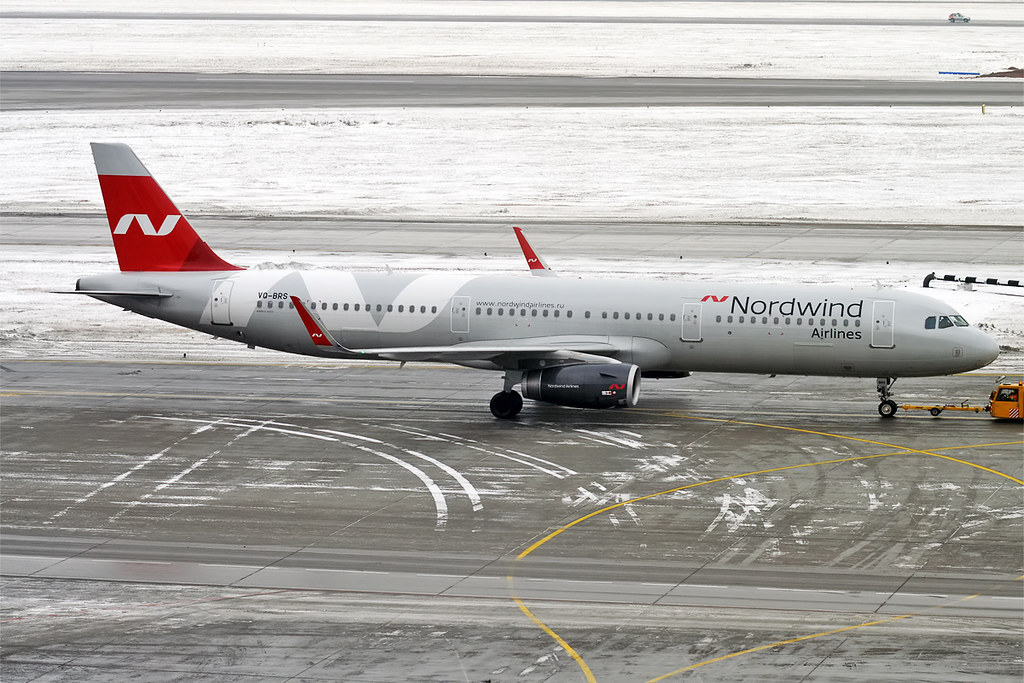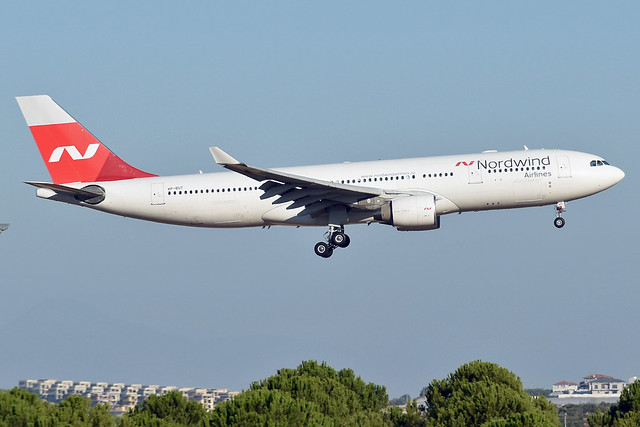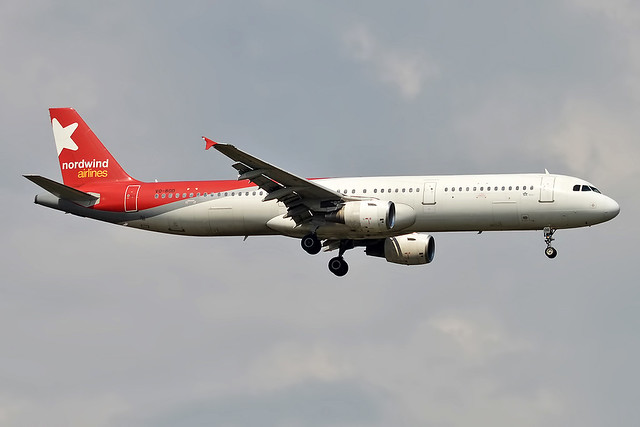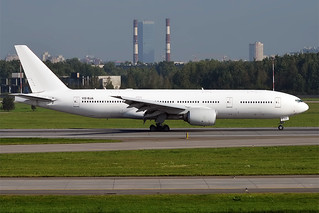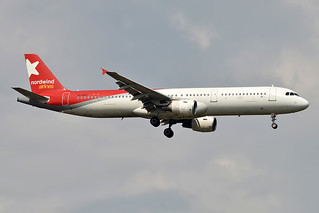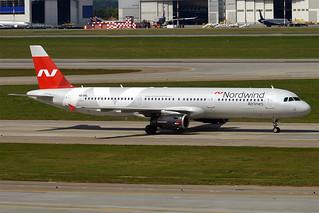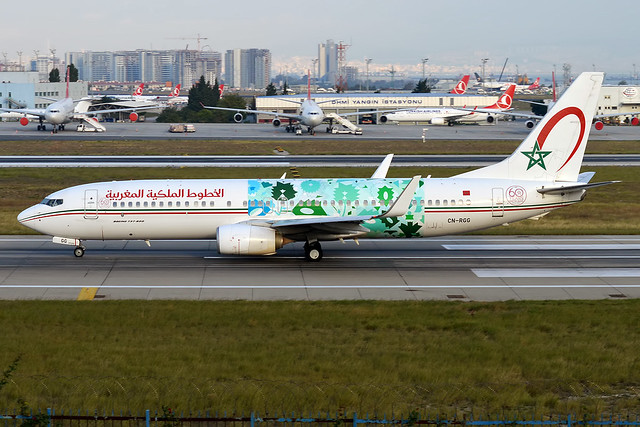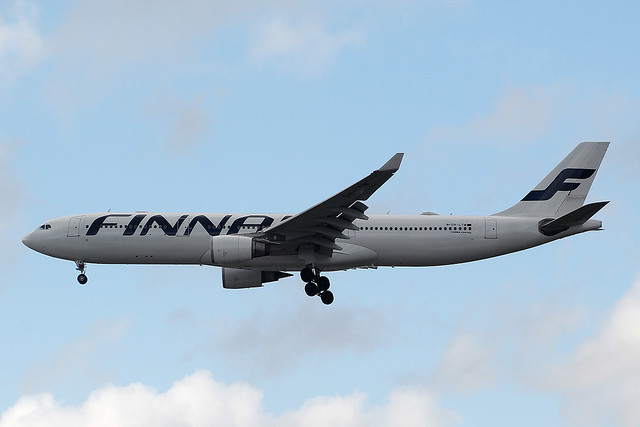Nordwind A321 at Antalya on Jan 10th 2020, hard landing
Last Update: March 3, 2024 / 15:48:01 GMT/Zulu time
Incident Facts
Date of incident
Jan 10, 2020
Classification
Accident
Cause
Hard landing
Airline
Nordwind Airlines
Departure
Moscow Sheremetyevo, Russia
Destination
Antalya, Turkey
Aircraft Registration
VQ-BRS
Aircraft Type
Airbus A321
ICAO Type Designator
A321
Airport ICAO Code
LTAI
A post flight inspection showed both nose gear tyres deflated, the nose gear strut had been pushed through the cabin floor, the fuselage all in the area of the nose gear showed signficant creases.
Russia's Embassy in Antalya reported there were no passengers on board of the aircraft, only crew according to the local office of Nordwind Airlines. The aircraft suffered a hard landing. There were no injuries, the aircraft sustained damage however.
On Jan 16th 2020 the Interstate Aviation Committee (MAK) announced, Turkish Authorities decided to delegate the investigation to Russia, the MAK will therefore investigate the accident. Turkey and France, representing the state of design and manufacture of the aircraft, have assigned accredited representatives to join the investigation. The MAK stated on Jan 10th 2020 an accident happened to A321 VQ-BRS at Antalya airport. The crew did not receive any injuries, the aircraft however sustained substantial damage to nose gear and the forward lower fuselage.
On Mar 27th 2020 Germany's BFU reported in their January Bulletin, that the aircraft encountered windshear on approach to Antalya and touched down hard causing the nose gear to collapse. The BFU joined the investigation representing the state of manufacture of the aircraft.
On May 5th 2020 the US NTSB reported they joined the investigation representing the state of manufacture of the Avionics Components.
At some unknown date the MAK silently (without any announcement or entry in the updates' list) released their interim report in Russian stating that the aircraft touched down nose gear first during the first approach, went around, performed a low approach to have the position of the gear inspected and landed without further incident. The aircraft sustained substantial damage.
The MAK reported the captain (42, ATPL, 6,128 hours total, 5,615 hours on type) was pilot flying, the first officer (45, ATPL, 4,350 hours total, 3,460 hours on type) was pilot monitoring. Before the descent into Antalya following receiving the current weather information via ACARS the captain held an approach briefing preparing for an ILS approach to runway 36C or 36R, other options were not considered, Vapp was computed to 122 KIAS and Vref at 117 KIAS. The aircraft subsequently performed the HISAR 1A standard approach procedure and joined the ILS for runway 36C, however, became high on the approach profile due to significant tail wind components. During the intercept the captain disconnected autopilot and autothrust in sequence. The aircraft established on the localizer at 1500 feet and 163 KIAS, 5.4nm before the runway still at 1500 feet the gear and full flaps were configured for landing. 3nm before the runway the aircraft descended through 1035 feet AGL at 145 KIAS, the approach was considered fully stabilized. At 100 feet AGL the speed began to decrease below Vapp while the aircraft remained slightly above the glide path. At 70 feet AGL the IAS reduced to 115 knots at 700 fpm rate of descent, the aircraft crossed the runway threshold at 30 feet AGL and 113 KIAS, descending through 20 feet AGL the pitch had increased to 5.5 degrees nose up at 109 KIAS with the speed trending to further reduction, when the captain provided large nose down inputs resulting in the nose lowering at up to 9 degrees/second. Almost simultanerously the thrust levers were pushed into the TOGA position. 2 seconds later the aircraft touched down with the nose gear first resulting in a vertical acceleration of +2.64G at a pitch angle of 3.9 degrees nose down. The aircraft bounced and settled in a climb, dual control inputs occurred by both captain and first officer. Inertial Reference Systems (IRS) 1 and 3 failed, pitch, bank and heading information was removed from the captain's PFD and ND, the flight control system switched to DIRECT LAW. The gear lever was jammed, the flaps remained in position 3. The captain handed controls to the first officer, who still had pitch, bank and heading information on his instruments, the first officer trimmed the aircraft manually. Climbing through 920 feet MSL the crew received an AVIONICS SMOKE indication, the crew donned their oxygen masks and declared Mayday. The aircraft levelled off at 3400 feet MSL when the IRS 2 also failed, pitch, bank and heading information was now removed from the first officer's instruments, too. The captain again took control of the aircraft now flying fully visually. The crew decided to overfly the runway at about 1300 feet MSL to have the position of the gear visually checked. The yellow hydraulic system quantity reduced and the low yellow hydraulic system pressure indication activated. The green hydraulic system showed excessive temperatures, then the low green hydraulic pressure low indication activated, too. The crew switched the green hydraulic system off. A total of 103 fault messages occurred at the ECAM. The visual inspection from the ground showed all landing gear in place, the aircraft positioned for a final approach to runway 36C, landed and stopped on the runway.
The aircraft received substantial structural damage.
The MAK further reported that both FDR and CVR were recovered in good conditions, the data units were found in good condition, too. However, there was no recording of the accident flight on the CVR. The recording found on the CVR was of the flight N4-1802 from Antalya to Moscow Sheremetyevo of A321-200 VP-BHN of Jan 11th 2020. The investigation determined, that both FDR and CVR had repeatedly been moved between Nordwind's warehouse and the aircraft VQ-BRS and had been installed on VP-BHN. Following the flight N4-1802 from Antalya to Sheremetyevo of VP-BHN the CVR was removed from that aircraft, taken to Antalya in the hand luggage on board of an Aeroflot flight and installed on VQ-BRS by local maintenance personnel (most likely of RMS Technic) before the investigation commission arrived. The commission considers the loss of information recorded on the CVR during an emergency flight became possible as result of violations of regulations, which in case of an incident prohibit the removal, opening, read out or manipulation of such recorders until the arrival of the investigation commission, by Nordwind officials and contracted organisations NV Technic LLC and RMS Technic. These regulations had also been accepted by Nordwind.
The MAK silently, without announcement in their list of updates on their website, released their final report in Russian only (Editorial note: to serve the purpose of global prevention of the repeat of causes leading to an occurrence an additional timely release of all occurrence reports in the only world spanning aviation language English would be necessary, a Russian only release does not achieve this purpose as set by ICAO annex 13 and just forces many aviators to waste much more time and effort each in trying to understand the circumstances leading to the occurrence. Aviators operating internationally are required to read/speak English besides their local language, investigators need to be able to read/write/speak English to communicate with their counterparts all around the globe).
The report concludes the probable causes of the accident were:
The accident of the Airbus A321-231 VQ-BRS occurred in the morning twilight under visual meteorologic conditions as result of erroneous actions by the pilot in command pushing the sidestick fully forward while correcting deviations of the flight path during "shallow flare", which resulted in the aircraft intensively rotating into a dive and a hard landing on the nose gear.
Contributing factors were:
- the crews untimely execution of the go around/balked landing when the airspeed dropped significantly below the target values and the criteria for stabilized approach were no longer fullfilled.
- absence of skills of the flight crew to flare in accordance with the procedures stipulated in the manual.
On Mar 3rd 2024 a courtesy translation of the final report surfaced.
Related NOTAMs:
A0166/20 NOTAMN
Q) LTAA/QMRLC/IV/NBO/A /000/999/3654N03048E005
A) LTAI B) 2001100600 C) 2001100900
E) RWY 18C/36C CLSD TO TRAFFIC.
A0177/20 NOTAMR A0166/20
Q) LTAA/QMRLC/IV/NBO/A /000/999/3654N03048E005
A) LTAI B) 2001100845 C) 2001101300
E) RWY 18C/36C CLSD TO TRAFFIC.
Metars:
LTAI 100620Z 35020KT CAVOK 08/M06 Q1020 NOSIG=
LTAI 100550Z 35023KT CAVOK 07/M06 Q1019 NOSIG=
LTAI 100520Z 01014KT CAVOK 07/M06 Q1019 NOSIG=
LTAI 100450Z 02016G26KT CAVOK 07/M06 Q1019 NOSIG=
LTAI 100420Z 01014KT CAVOK 07/M06 Q1019 NOSIG=
LTAI 100404Z 36018G29KT CAVOK 07/M06 Q1018 NOSIG=
LTAI 100350Z 36018KT CAVOK 07/M06 Q1018 NOSIG=
LTAI 100320Z 35022KT CAVOK 07/M06 Q1018 NOSIG=
LTAI 100250Z 35025KT CAVOK 08/M05 Q1017 NOSIG=
LTAI 100220Z 35023KT CAVOK 08/M06 Q1017 NOSIG=
LTAI 100150Z 36018KT CAVOK 08/M05 Q1017 NOSIG=
LTAI 100120Z 35018KT CAVOK 08/M04 Q1018 NOSIG=
Incident Facts
Date of incident
Jan 10, 2020
Classification
Accident
Cause
Hard landing
Airline
Nordwind Airlines
Departure
Moscow Sheremetyevo, Russia
Destination
Antalya, Turkey
Aircraft Registration
VQ-BRS
Aircraft Type
Airbus A321
ICAO Type Designator
A321
Airport ICAO Code
LTAI
This article is published under license from Avherald.com. © of text by Avherald.com.
Article source
You can read 2 more free articles without a subscription.
Subscribe now and continue reading without any limits!
Read unlimited articles and receive our daily update briefing. Gain better insights into what is happening in commercial aviation safety.
Send tip
Support AeroInside by sending a small tip amount.
Related articles
Nordwind A332 near Moscow on Nov 6th 2021, engine shut down in flight
A Nordwind Airlines Airbus A330-200, registration VP-BUT performing flight N4-7830 from Antalya (Turkey) to Moscow Sheremetyevo (Russia), was on…
Nordwind A321 at Ekaterinburg on Aug 3rd 2021, hydraulic failure
A Nordwind Airbus A321-200, registration VQ-BOD performing flight N4-132 from Simferopol (Ukraine) to Ekaterinburg (Russia) with 148 passengers on…
Nordwind B772 at Cayo Coco on May 11th 2021, engine fire indication
A Nordwind Boeing 777-200, registration VQ-BJA performing flight N4-522 from Cayo Coco (Cuba) to Moscow Sheremetyevo (Russia), was in the initial…
Nordwind A321 near Rostov on Jun 25th 2021, loss of cabin pressure
A Nordwind Airbus A321-200, registration VQ-BOD performing flight N4-123 from Moscow Sheremetyevo (Russia) to Simferopol (Ukraine), was enroute at…
Nordwind A321 and S7 B738 near Rostov on May 29th 2021, unlawful interference indication
A Nordwind Airbus A321-200, registration VQ-BRL performing flight N4-161 from Moscow Sheremetyevo to Krasnodar (Russia), was enroute at FL330 about…
Newest articles
RAM B738 at Tunis on Apr 26th 2024, bird strike
A RAM Royal Air Maroc Boeing 737-800, registration CN-RGG performing flight AT-573 from Tunis (Tunisia) to Casablanca (Morocco), was climbing out of…
Finnair A333 over Canada on Apr 28th 2024, engine shut down in flight
A Finnair Airbus A330-300, registration OH-LTM performing flight AY-10 (dep Apr 27th) from Chicago O'Hare,IL (USA) to Helsinki (Finland) with 194…
Subscribe today
Are you researching aviation incidents? Get access to AeroInside Insights, unlimited read access and receive the daily newsletter.
Pick your plan and subscribePartner

A new way to document and demonstrate airworthiness compliance and aircraft value. Find out more.

ELITE Simulation Solutions is a leading global provider of Flight Simulation Training Devices, IFR training software as well as flight controls and related services. Find out more.

Your regulation partner, specialists in aviation safety and compliance; providing training, auditing, and consultancy services. Find out more.
AeroInside Blog
Popular aircraft
Airbus A320Boeing 737-800
Boeing 737-800 MAX
Popular airlines
American AirlinesUnited
Delta
Air Canada
Lufthansa
British Airways
